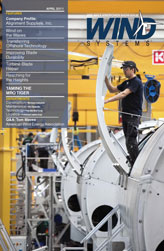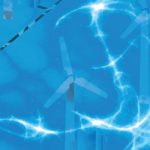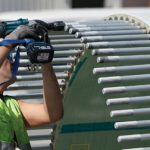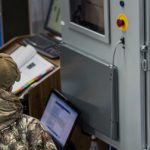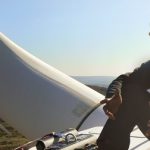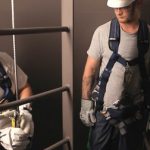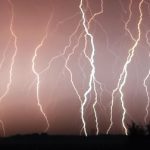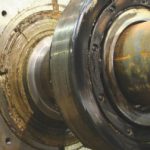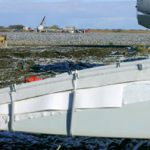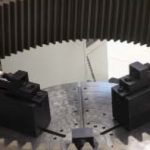Offshore wind has been steadily expanding—around 40-percent growth in installed capacity between 2008 and 2009—in Northern Europe for a number of years now. The expansion and ongoing maturity of this sector has not been without painful lessons learned, as the harsh offshore environment has introduced challenges not faced by the relatively low risk construction and operation of onshore wind farms. It is now evident that the U.S. market is ready to explode, with a number of projects achieving or being close to achieving permitting. Size-wise the projects will be big, and lessons learned could be expensive. The U.S. offshore wind industry can benefit from the European experience when formulating U.S.-focused plans.
This article aims to draw from the author’s experience as a lenders’ engineer in the non-recourse financing of four offshore wind farms in Europe. The projects in question are:
• Q7 (now known as Prinsesamalia Wind Farm) in Holland: 120 MW capacity;
• Thornton Bank Phase I in Belgium: 30 MW capacity;
• Bligh Bank in Belgium: 165 MW capacity;
• Thornton Bank Phases II and III in Belgium: 295 MW capacity (plus 30 MW from Phase I as part of refinancing).
Further inputs in this article are provided from experience fulfilling lender’s engineer work for projects currently seeking financing, as well as other roles in dealing with a number of offshore wind projects in the U.K., Germany, France, and other areas around the world.
Supply Chain Issues
Supply chain constraints have proved and continue to be a major challenge in Europe. For the U.S. it is envisaged that such constraints may be more prominent for some areas, whereas for others such constraints may not be as significant.
Vessels required for the installation of foundations and wind turbines offshore require specific characteristics. It goes without saying that big vessels are required, with significant carrying capacity—depending on the wind turbine model, weights could be in the region of 500 tonnes plus for the nacelle—but more crucially the onboard crane should have the capability of moving long (80 meters plus) and heavy components at some distance with minimum movement, especially during the installation of the turbines on top of the foundations. Such specialized vessels are in great demand in Europe, and vessels that have a proven track record are even less. For the U.S. this situation may be exaggerated due to the Jones Act, which prohibits the use of non-U.S. flagships. As a result of this Act, if indeed this Act is applicable, it may not be possible to utilize, proven from European projects vessels. In turn, this may mean that vessels will be performing these tasks for the very first time with an inexperienced crew, which could result in mistakes being made that could have otherwise been avoided, or realization that the vessels proposed are not suitable for the job at hand.
It should be highlighted that, whereas offshore experience from oil and gas is relevant and useful for the offshore wind construction industry, the requirements for offshore wind are somewhat different. For oil and gas a lot of effort is put into planning for a single lift with mitigating provisions, plus in most cases the process is over-designed as the revenue stream from oil and gas justifies some overspend for installation activities. For offshore wind the economics are a lot tighter and, more crucially, there is a series of lifts as opposed to just one. The process is therefore designed to be quite generic with limited time between lifts to fully implement lessons learned. Put simply, if a vessel with a restrictive operational envelope is used that was thought to be appropriate but in practice proves not to be, it could lead to severe project delays or the need to replace the vessel.
A key mitigant for reducing this risk is to engage with experienced people in the offshore wind industry, and thus facilitate an expedited knowledge transfer. It is acknowledged that there is a pool of talent in the U.S., with people with lots of offshore experience who should be in a position to quickly use this knowledge and enhance their own skills.
Finding a suitable harbor is the next big constraint in Europe. Requirements for significant storage space, high bearing capacity, length of docking berths, and requirements for large draft when loading heavy machinery makes many harbors unsuitable. Larger harbors that have such specifications tend to be expensive for the finances of an offshore wind project, since other industries are in a better position to offer lucrative deals and longer leasing options to the harbor owners. Some harbor owners in Europe, however, have identified the opportunity and proactively built up their capabilities to support the industry; a similar approach may become evident in the U.S., too, once an offshore wind market has been established.
During the operation and maintenance (O&M) period the harbor challenge is somewhat different. The requirements are modest, since transfer boats do not require lots of space and usually an office/warehouse is sufficient for the needs of an offshore wind farm. However, some harbor owners are reluctant to make their facilities available to support offshore wind O&M. This is because it involves the commitment of relatively small berth spaces long term, which can sterilize larger parts of the harbor that can be leased more profitably.
A key mitigant for harbor issues is early engagement with the harbor owners to identify an optimal space in the harbor. Identification of smaller, less-busy harbors or synergies with other projects to share an O&M base, and thus require more space in the harbor, are other strategies that should be considered.
The final key supply chain issue is the shortage of skills in the industry, which was briefly discussed earlier as part of the vessel availability. All key stakeholders in Europe have seen significant growth rates, and the indications in the U.S. are that such growth will be at least similar, which has exaggerated this shortage. Such rapid growth has resulted in large numbers of people being given responsibilities beyond their experience. This is a key issue for the industry that is likely to manifest itself in terms of health and safety (H&S) and quality for years to come. Engagement of experienced people is a key mitigant, and due diligence is required when assessing a company’s capabilities even if it is a company with a long track record.
Construction Issues
Cable Installation: It might be thought that the bigger challenges during the construction of an offshore wind farm are faced when dealing with the larger components such as the foundations and wind turbines. Even though these are indeed challenging operations, experience to date shows that the biggest issue relates to cable installations, with more incidents experienced than the rest of the project works.
The challenges with cable installations can be argued to be twofold: inappropriate vessels for the conditions, and lack of experienced cable installers. Due to these issues a number of cable contractors have gone bankrupt while learning important lessons.
Weather Risk: Weather risk relates to construction and operational delays due to weather. Typically, an assessment of the metocean conditions—wind, wave, and current—is undertaken to establish the workability of the vessels and understand the duration each task is likely to take. As part of this assessment, a key input is the likely duration of the offshore tasks. If the conditions are favorable for part of the offshore task duration but unfavorable for the remaining part, then the vessels may not even leave the harbor. Such constraints have resulted in delays with a number of operations for the constructed projects to date.
In order to mitigate such risk installation activities are typically constrained during the winter months in Europe, with the majority of the work taking place between March and October. It is likely that U.S. developers will also take this view and adjust the offshore activities for statistically favorable weather. Nevertheless, some projects have managed to proceed with offshore installations successfully during the winter, taking advantage of better than expected weather in the last couple of years. The conclusion, therefore, is that if it is financially viable, offshore wind developers should consider having their contractors on standby in case the weather favors them.
Contractually, how weather risk is best allocated is still an item for discussion. Some developers take the view that all weather risk should be passed to the contractors at a price, whereas others are comfortable carrying the majority of weather risk. If the contractor is required to take the weather risk, and if the weather proves to be better than statistically expected, the developer would have paid for weather downtime that did not materialize. Of course, if the weather was worse than expected, the situation is reversed. It should be noted that this risk can be partly insured if weather ex ceeds statistical averages.
Turbine Technology: Currently in Europe most projects continue to be developed with 3 to 5 MW units in mind. However, more recent projects such as Thornton Bank Phases II and III will use 6 MW models. The increase in capacity from 5 MW to 6 MW is significant, 20 percent, and provides further evidence that the industry has not reached the point of optimum wind turbine capacity. Indeed, capacities of up to 10 MW are currently being considered as feasible in the next few years.
Nevertheless, for offshore wind an ever-increasing capacity should not be the only priority for turbine manufacturers. As a matter of fact, some manufacturers are focusing on extracting more energy from the same capacity. A key consideration for offshore wind should be the reduction of weight both in real terms and kg/MW basis as well as reducing the complexity of wind turbines both for construction and operations. The aforementioned approach could result in cost reductions for an industry that has seen construction costs steadily increasing in the last five years. A further benefit could be the use of smaller vessels and harbors.
Conclusions
This article has drawn from experience as a lender’s technical advisor from four pre-construction non-recourse financed offshore wind projects to date, as well as involvement with other projects. All projects are currently based in Europe, but the lessons learned and issues faced are likely to be directly applicable to the U.S. market as well. All stakeholders are advised to learn for the lessons learned in Europe to try and avoid the same mistakes being made in the U.S. It is worth noting that the majority of the proposed projects in the U.S. are big, and therefore such mistakes could prove very costly. Some key observations/conclusions can be made from these projects.
Supply chain issues the greatest challenge. Limited availability of suitable vessels, harbors, and people are key constraints in Europe, and it is likely that this will also be the case in the U.S. The biggest construction issues to date relate to cable installations, with more incidents experienced than the rest of the project works. Adverse weather remains a key risk for offshore projects. This risk can either be carried by the developer, with significant mitigants, or be passed to the contractors for a price. There is a continued drive for larger units, with current projects utilizing unit capacities between 3 to 6 MW. Nevertheless, weight and complexity reduction may prove more attractive parameters than bigger units.



















